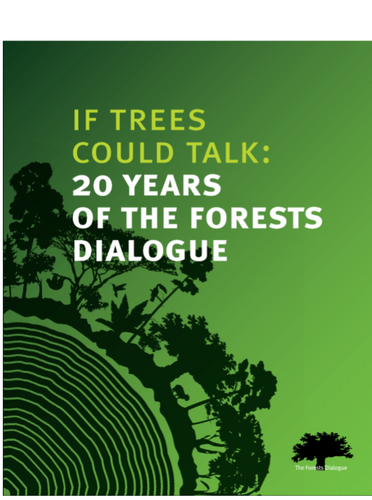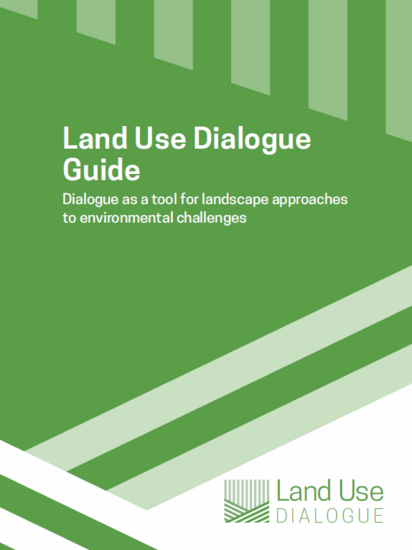
If Trees Could Talk moves through TFD’s structure and approach, from its three-part methodology “Engage! Explore! Change!” to the internal diversification of voices and an expanded focus from the economic and ecological importance of forests to integrating social and cultural values. TFD – including current co-leads Ivone Namikawa of Klabin in Brazil and Milagre Nuvunga of the MICAIA Foundation in Mozambique, executive director Gary Dunning, the steering committee, and student associates – welcomes the forestry sector to celebrate this progress made in the past two decades.
The Forests Dialogue Guide outlines how to plan, organize, and implement multi-stakeholder dialogue initiatives. The guide draws on TFD’s experiences and lessons learned from implementing more than 90 dialogues over the past 20 years. By candidly documenting the TFD approach and structure, the guide provides tangible learnings for companies, governments, donors, and non-governmental organizations that are interested in implementing their own multi-stakeholder dialogue initiatives or learning from TFD’s experiences. For those interested in learning more about how TFD operates, the guide describes the process of maintaining strong and diverse governance, explores how TFD implements its core principles, and provides case studies demonstrating how dialogue outputs and recommendations have been used to create change.
The Land Use Dialogue is one of TFD’s key initiatives, aimed at supporting learning processes in landscapes around the world where stakeholders are applying a landscape approach to environmental decision making. Landscape approaches are increasingly used with the understanding that what one actor does on their land impacts the surrounding land uses and resources throughout the landscape. While this concept has long been understood in environmental sciences, many institutions and governance processes remain siloed to their own specializations, be it forest conservation or agriculture. The Land Use Dialogue initiative aims to support a process for leaders and representatives across sectors and interests to understand: 1) varying visions for land use, conservation, and development in the landscape, 2) identify trade-offs and synergies, and 3) work towards solutions.
The Land Use Dialogue Guide is an implementer’s guide but not in the sense of do x,y,z to achieve some outcome. Instead it presents stages of decision making in which LUD leadership will need to consider how to shape the process to meet their unique context and needs.


